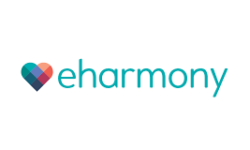What is Triangle Method? TikTok’s New Flirting Term
By Jordan Blake
January 10, 2024 • Fact checked by Dumb Little Man

In the dynamic landscape of dating and interpersonal communication, a novel trend is emerging on TikTok, captivating a wide audience: the Triangle Method. This innovative approach, merging body language expertise with elements of subtle seduction, is swiftly gaining popularity. It's not confined to the realms of social media; the Triangle Method is increasingly becoming a subject of interest in broader discussions about contemporary dating techniques.
The Triangle Method distinguishes itself by emphasizing non-verbal cues in forging connections. It encourages an individual to alternate their gaze between a partner's eyes and mouth, creating a triangular pattern of visual engagement. This strategy is lauded for its ability to facilitate a deeper emotional connection without relying on overt gestures or words. It's a testament to the evolving nature of romantic communication, reflecting the modern era's inclination towards nuanced and psychologically informed approaches to dating.
What is Triangle Method?

The Triangle Method stands as a unique flirting technique, centering on the power of non-verbal communication. Its essence lies in the strategic use of eye contact and careful observation of facial expressions. This approach is structured around a simple yet effective concept: forming a visual triangle by methodically shifting one's gaze between the eyes and mouth of the person they are conversing with. Such a pattern is not just random but is purposefully designed to foster a deeper connection and spark a sense of attraction.
By focusing on these key facial areas, the Triangle Method taps into the subtle nuances of human expression. It goes beyond mere words, harnessing the unspoken but powerful language of the eyes and the mouth. This method offers a subtle yet impactful way to communicate interest and engagement. It embodies a modern approach to flirting, where the emphasis is placed on understanding and responding to the silent cues that play a pivotal role in human attraction and interaction.
>>Also Read: 20 Techniques On How To Tell If A Guy Is Flirting Or Just Being Friendly
The Mechanics of the Triangle Method

The Triangle Method begins by focusing on the other person's eyes. The gaze starts with one eye, often the left eye, and then moves to the right eye. This deliberate shifting of attention between the eyes forms the first two points of the triangle. The process culminates in directing the gaze towards the mouth, completing the upside triangle pattern of observation. This systematic approach in observing these key facial features gives the technique its name and is fundamental in establishing a non-verbal, yet deeply communicative connection.
When employing the Triangle Method, the initial focus is on the eyes. This is crucial because the eyes are remarkably expressive and can provide a wealth of information about a person's emotional state and level of attentiveness. By observing the nuances in the eyes – the slight changes in gaze, the flickers of emotion – one can glean insights into the other person's feelings and interest levels, setting the stage for a deeper, more meaningful interaction.
The next step involves shifting attention to the mouth. This phase is vital as it offers a window into the person's reactions and responses. Smiles, frowns, and other mouth movements are key indicators of a person's feelings and sincerity. Observing these subtle changes can provide clues about their comfort level and emotional responses, making it an essential aspect of the Triangle Method in understanding and connecting with the other person.
Finally, the Triangle Method includes a focus on the forehead, although this is less commonly emphasized. Observing the forehead can provide additional insights into a person's thoughts or concerns. This area of the face often reflects expressions of concentration or worry, thus offering clues about the person's internal thought processes or emotional state. This element, while more subtle, adds another layer to understanding the individual during a conversation.
The Psychology Behind Eye Contact in the Triangle Method

Eye contact plays a pivotal role in human communication, serving as a key indicator of interest and attention. The Triangle Method leverages this aspect by integrating prolonged eye contact into its technique. However, it smartly breaks this eye contact into shorter intervals, shifting between the eyes and mouth. This approach ensures that while the intensity and significance of eye contact are maintained, it does not become overwhelming or uncomfortable for either party. It's a balanced method that respects personal boundaries while still fostering a sense of closeness and engagement.
In practicing the Triangle Method, the focus on both the person's eyes and mouth plays a crucial role. These facial areas are expressive and can reveal much about an individual's emotional state and reactions. For instance, a sly smile or a nuanced shift in the eye's expression can communicate volumes, often more than words could. These subtle cues, when observed and interpreted correctly, can significantly enhance the connection between two individuals, making the Triangle Method a powerful tool in non-verbal communication and fostering deeper emotional bonds.
Application of the Triangle Method in Real-Life Scenarios
To effectively utilize the Triangle Method, an individual should simply trace the triangular path with their gaze. This involves methodically moving one's focus between the eyes and the mouth. Crucially, each focus point should be held for no more than three seconds. Adhering to this time frame is essential as it helps in maintaining a balance between interest and comfort. This technique not only creates anticipation but also adds a fascinating layer of intrigue to the conversation. The subtle yet intentional eye movements engage the other person, sparking curiosity and maintaining a dynamic interaction.
While the Triangle Method primarily focuses on the eyes and mouth, a comprehensive understanding of body language significantly enhances its effectiveness. Observing a person’s overall body language, including gestures, posture, and other non-verbal cues, offers a broader perspective on their emotional state and intentions. This holistic approach allows for a deeper understanding and connection, as body language often conveys messages not explicitly expressed in words. By integrating the Triangle Method with an awareness of broader body language signals, one can gain a more nuanced and complete understanding of the interaction and the person involved.
Expert Opinions on the Triangle Method

A body language expert would likely suggest that the effectiveness of the Triangle Method lies in its ability to engage with crucial facial features that play a significant role in expressing interest and attraction. By focusing on the eyes and mouth, this method taps into the fundamental aspects of human expression and connection. It is perceived as a foolproof way to gauge someone's interest subtly, offering a strategic yet unobtrusive approach to deciphering non-verbal cues. The Triangle Method provides a nuanced alternative to more direct methods, enabling individuals to explore mutual attraction without the pressure of overt gestures or explicit verbalization.
While the Triangle Method has not been the subject of specific clinical trials, its underlying principles are deeply anchored in well-established psychological theories of non-verbal communication. These theories underline the importance of facial expressions and eye movements in conveying emotions and intentions. The method’s reliance on these time-tested concepts of human interaction lends it credibility, despite the lack of direct scientific validation. This association with foundational psychological theories suggests that the Triangle Method is more than just a passing trend, but rather a practice grounded in the core understanding of human behavioral cues and social interaction.
Critiques and Limitations of the Triangle Method

Although the Triangle Method is often heralded as a foolproof method for non-verbal communication in dating, it's crucial to recognize the impact of individual differences on its efficacy. Communication techniques, including this method, are not one-size-fits-all solutions. People's unique personalities, emotional expressions, and comfort levels with certain types of eye contact or non-verbal cues can significantly influence how well such methods work. Acknowledging these individual variances is key to understanding why the Triangle Method might be highly effective for some, yet less so for others. This perspective underlines the importance of adapting communication strategies to align with the specific nuances and preferences of the individuals involved.
The success of the Triangle Method also hinges on the context of the conversation and the nature of the relationship between the participants. The setting of the interaction, the prior history and comfort level between the individuals, and the overall mood can all shape how the method is perceived and its subsequent impact. In some scenarios, this method might enhance connection and attraction, while in others, it could be perceived as unnatural or intrusive. Therefore, the adaptability and sensitivity to the context and relational dynamics are critical in determining the effectiveness of the Triangle Method in fostering meaningful and comfortable interactions.
Conclusion
The Triangle Method transcends its status as a mere fleeting trend on TikTok, establishing itself as a sophisticated approach to flirting and building connections. Its foundations are deeply set in the principles of non-verbal communication and human psychology, offering insight into the subtle dynamics of human interaction. This method embodies a comprehensive understanding of how eye contact and facial cues can play pivotal roles in expressing interest and establishing rapport. Whether perceived as a foolproof way to ignite romantic sparks or regarded as a valuable addition to the array of dating techniques, the Triangle Method undeniably provides a unique lens through which we can explore and enhance our interpersonal connections.
>>Also Read: TikTok’s New Relationship Term: Beige Flags
FAQs: What is Triangle Method
Can the Triangle Method be used in all types of conversations, not just in flirting?
The Triangle Method, primarily known for its role in flirting, can be adapted to various types of conversations. Its focus on eye contact and facial observation makes it useful in enhancing general communication and building rapport. However, the intensity and frequency of its use should be adjusted based on the context and relationship between the individuals involved.
Is it possible to overuse the Triangle Method, and if so, what are the signs?
Yes, overusing the Triangle Method can occur, especially if it leads to discomfort or unease in the other person. Signs of overuse include the other person breaking eye contact frequently, appearing distracted, or showing signs of discomfort. It's important to maintain a natural flow in the conversation and to be mindful of the other person's non-verbal cues.
How long does it take to become proficient in the Triangle Method?
Proficiency in the Triangle Method varies from person to person. It requires practice and a keen sense of observation to master. The key is to practice it subtly in various social situations, paying attention to how others respond, and adjusting accordingly. With regular practice, one can become more adept at using this technique effectively within a few weeks to a few months.
Jordan Blake
Jordan Blake is a cultural commentator and trending news writer with a flair for connecting viral moments to the bigger social picture. With a background in journalism and media studies, Jordan writes timely, thought-provoking content on everything from internet challenges and influencer scandals to viral activism and Gen Z trends. His tone is witty, observant, and sharp—cutting through the noise to bring readers the “why” behind the “what.” Jordan’s stories often go deeper than headlines, drawing links to pop culture, identity, and digital behavior. He’s contributed to online media hubs and social commentary blogs and occasionally moderates online panels on media literacy. When he’s not chasing the next big trend, Jordan is probably making memes or deep-diving into Reddit threads. He believes today’s trends are tomorrow’s cultural history—and loves helping readers make sense of it all.






